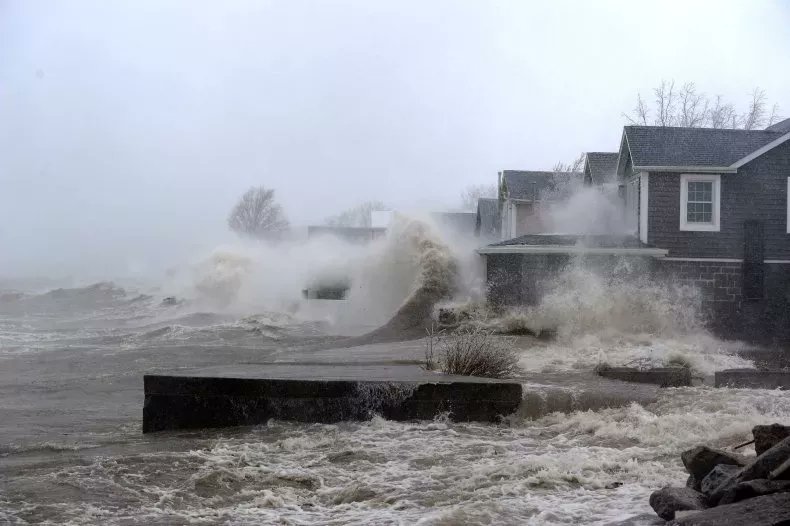
I recently wrote a #GreatLakes tweet discussing the distinction between storm surge and seiches, following a huge surge on LakeErie. I was asked if a seiche was to follow, but the answer caught me off guard: #LakeErie may have huge storm surges, but it has a weak seiche game!
I’ll reiterate: storm surge refers to water stacking up at one end of a lake during a large wind event; seiches are periodic sloshing of water back and forth in a basin. Seiches frequently follow storm surges, but they are separate phenomena resulting from distinct physics. 

While I study lake physics in general, the system I’m most familiar with is the #GLOAT, #LakeSuperior. Seiching activity is ubiquitous in Lake Superior- it’s hard to look at a record of lake level without seeing the characteristic, eight-hour oscillations. 

However, if you look at the lake level record from #LakeErie following the pre-Christmas blizzard, while there is a huge storm surge (over 5m difference across the lake!), afterwards, the lake simply “relaxes” back to equilibrium. No periodic signal at all! 

Compare this to a storm event in Lake Superior. There wasn’t a pronounced storm surge in Superior during the blizzard, so I’ve chosen another (textbook) event that illustrates the point. The surge is nowhere near as large, but is followed by a very clear seiche event. 

So why the difference? Amongst the #GreatLakes, Erie is shallowest, with an average depth of about 60 feet. It turns out that you can use some basic physics to show that this is why the storm surge is so large in Erie- shallower lakes have a greater response to the wind.
Likewise, the surge response in Superior is weak due to its great depth- the deepest of the lakes, with an average depth of over 500 feet. This difference is well understood, and the infrastructure around the lakes is built with this in mind.
What initially caught me off guard was the lack of a pronounced seiche in Erie. It turns out that as water moves in a lake, it rubs against the bottom of the lake. This creates drag, which takes energy out of the system. The shallower the lake, the more effective that drag is.
In Lake Erie, energy is taken out of the system so quickly that it doesn’t really have a chance to slosh back and forth; it helps that the period of the seiche in Erie is quite long- about 15 hours, compared to 8 for Superior (again, largely a function of differences in depth).
That’s not to say that there is no seiching activity in Erie, only that it is weak compared to the strong wind-driven response. With proper numerical techniques you can show that it is there.
I’ve not mentioned the other lakes here, but they behave more like Superior than Erie: #LakeOntario (~6h), #LakeMichigan (~10h) and #LakeHuron (~8h) all produce appreciable seiches. #LakeErie stands alone among the #GreatLakes with a relatively weak seiche signal.
• • •
Missing some Tweet in this thread? You can try to
force a refresh




